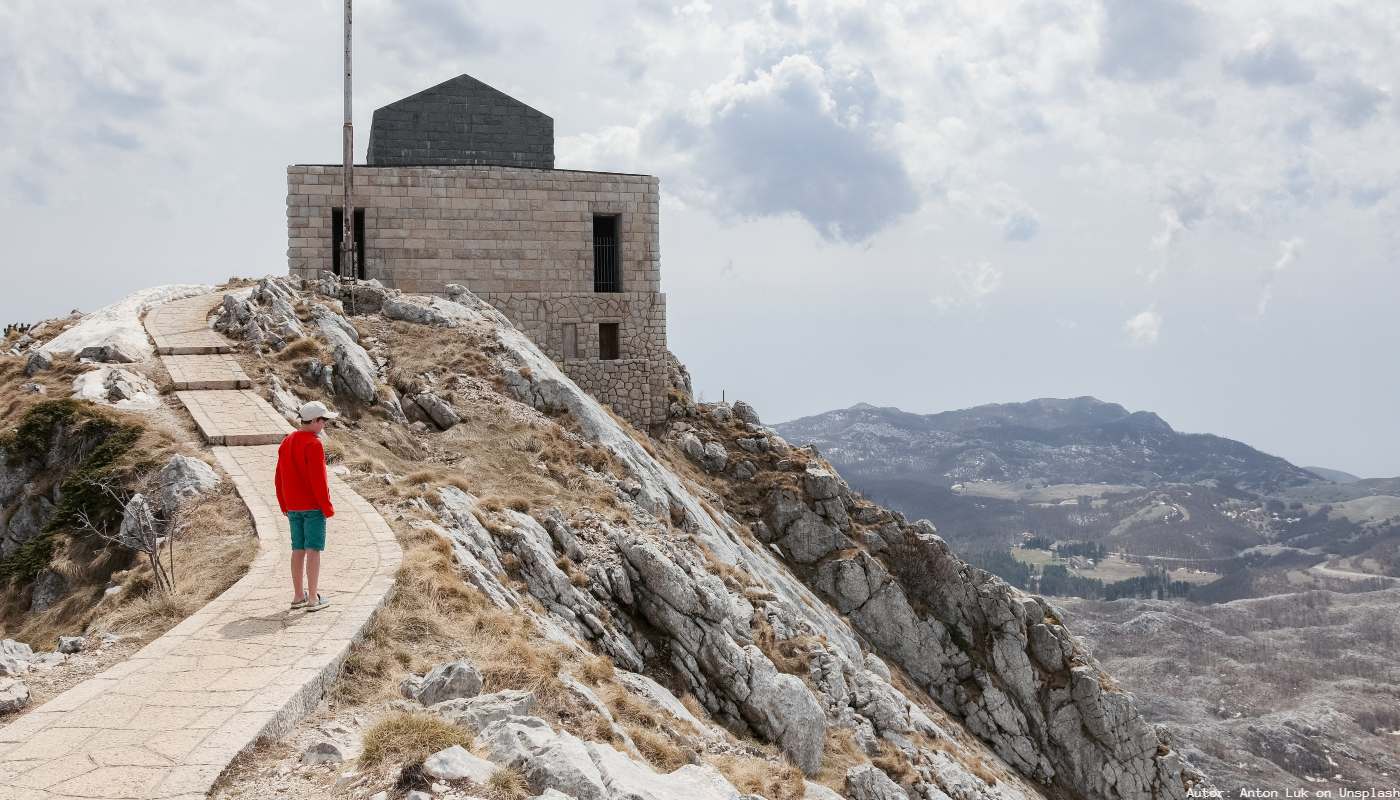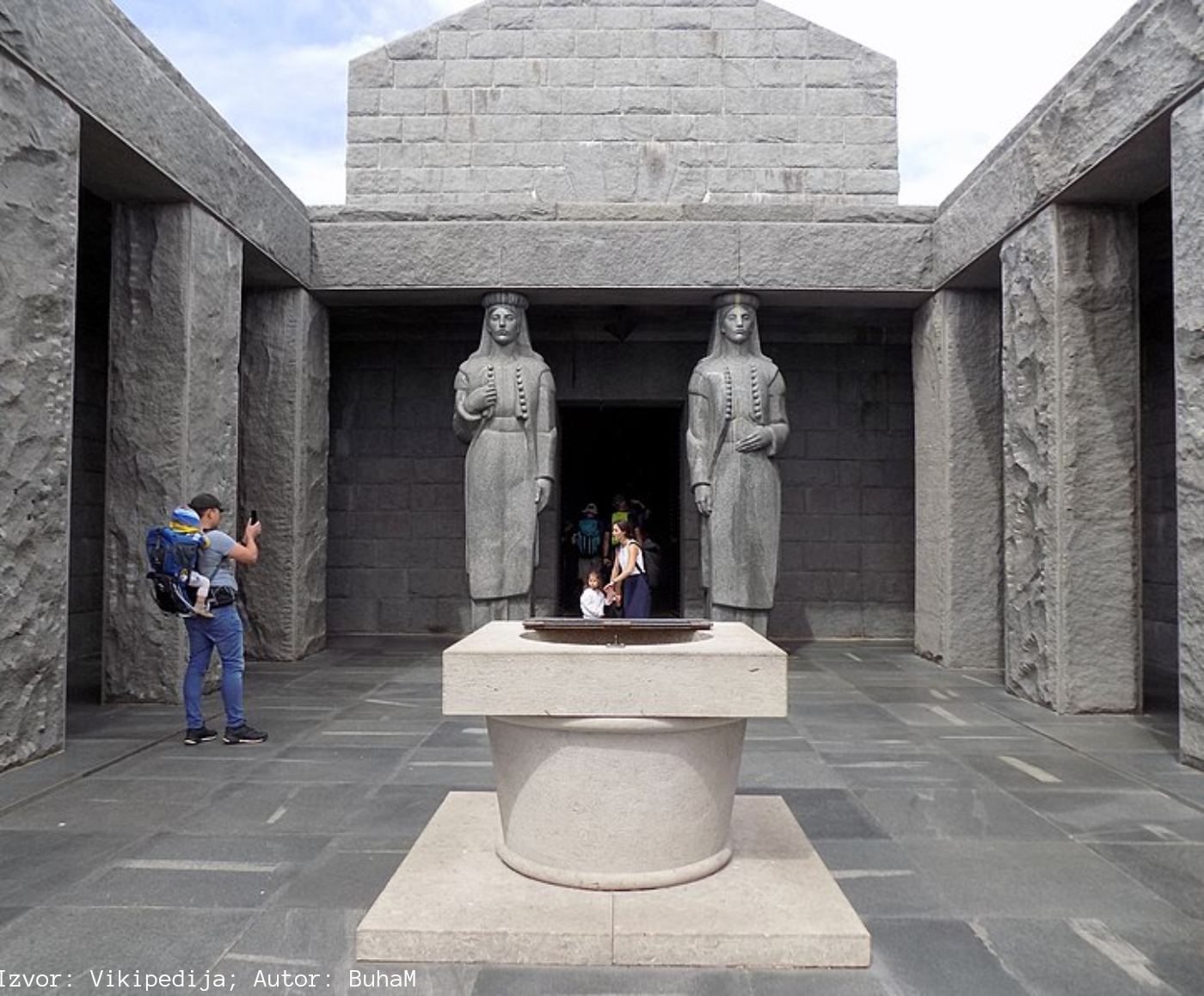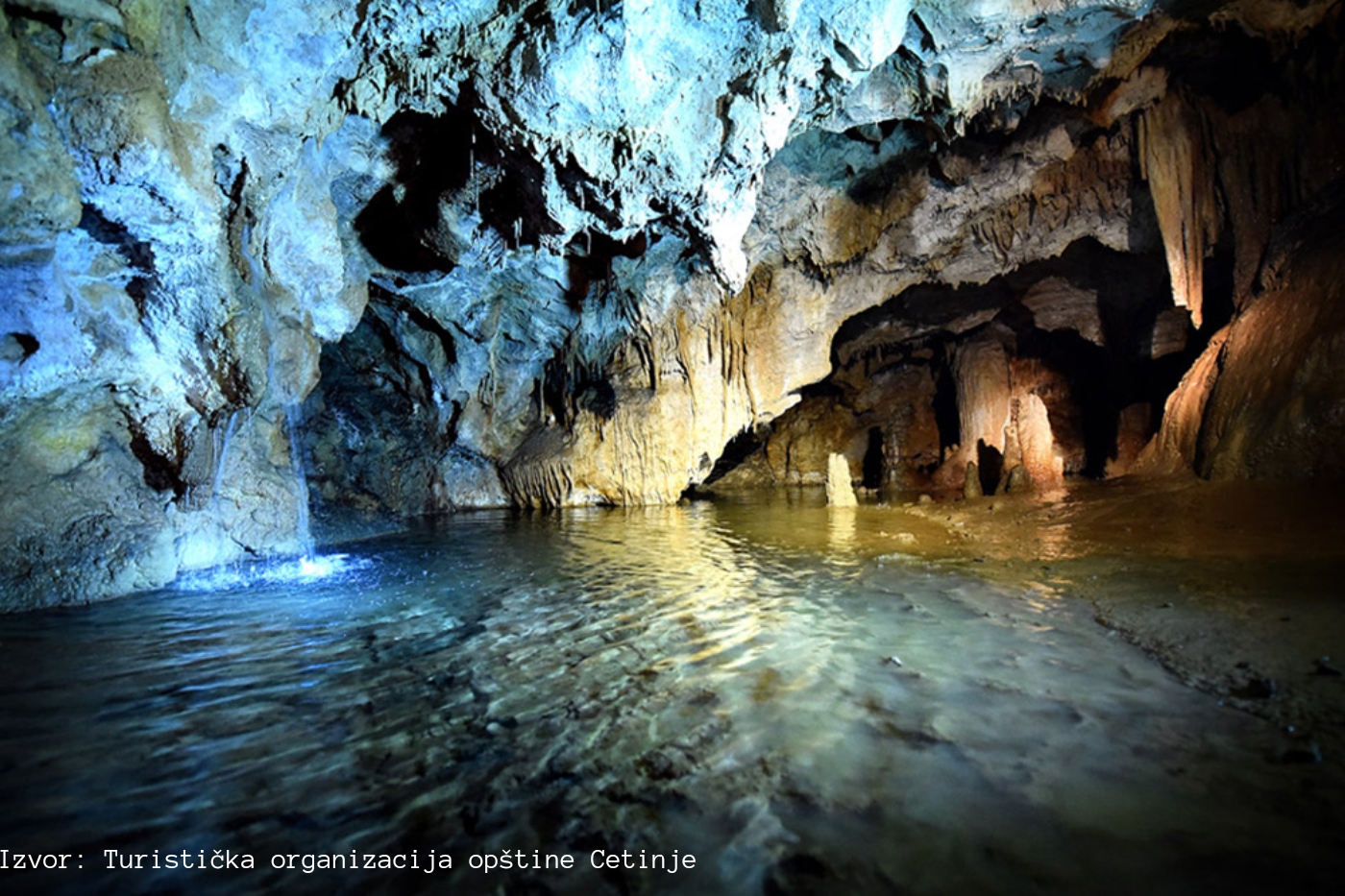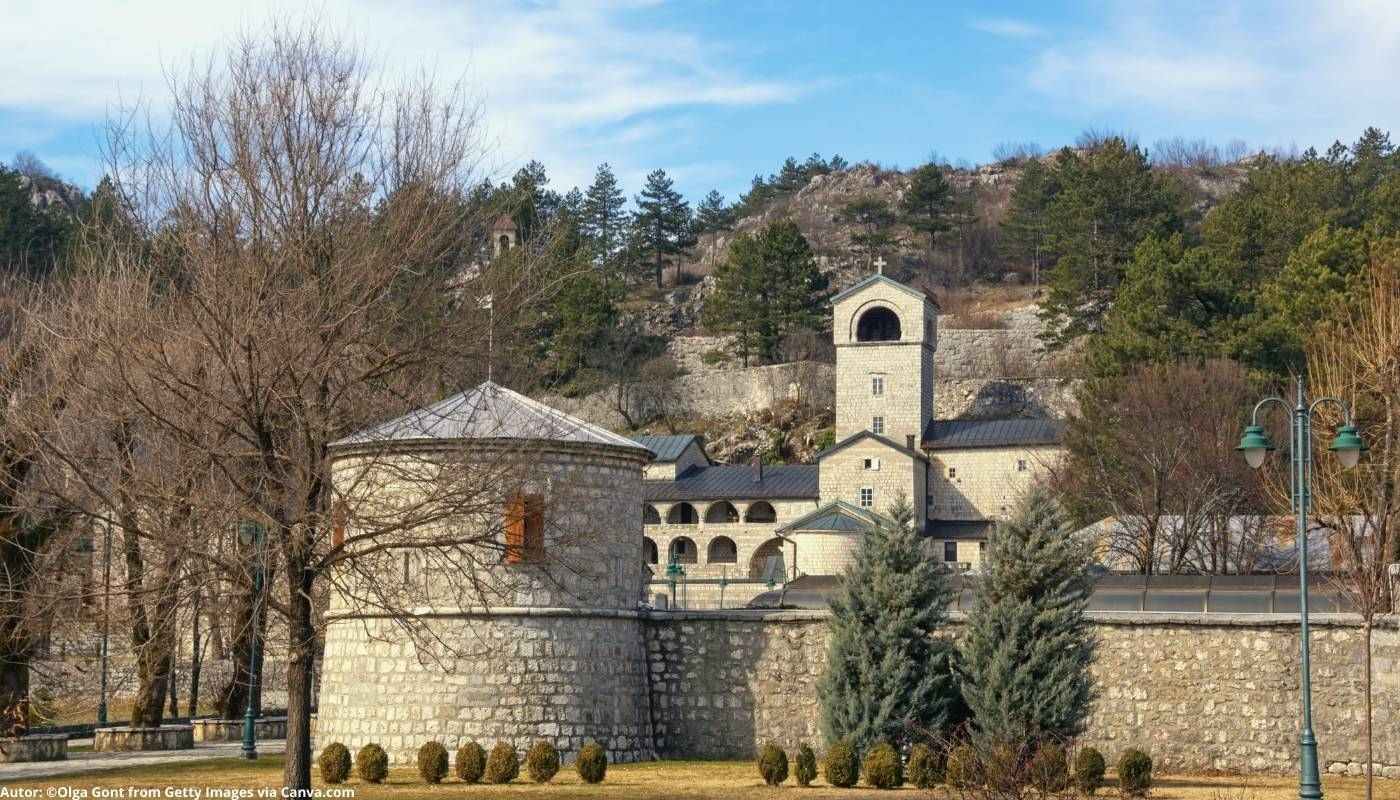When to visit Cetinje?
- During summer - Montenegro's capital is located not far from the Adriatic Sea and coastal cities, so you can pay a visit to it on your way to the sea. In the vicinity of Cetinje is the famous Lovcen National Park, which stands out from this mountainous terrain with its beauty and natural resources perfect for summer exploration.
- During winter - Cetinje also offers its visitors the perfect winter vacation. During the winter, it is very easy to get to the ski centers to the north of Cetinje. The city itself is located at the foot of the Lovcen mountain, which is ideal for winter activities.
How to get to Cetinje?
- By car - The main transit routes to European countries are: to the north E65 or E80 (Belgrade and Central Europe), to the west (Western Europe, Bosnia and Niksic) E762, to the south (Adriatic coast) E65 or E80, to the east (Albania) E762.
- By bus - Montenegro is connected to Serbia, Croatia, Bosnia and Herzegovina, and other surrounding countries. During the summer and winter seasons, many private carriers and minibusses transport tourists to their desired destinations. Call the bus station in Cetinje (+382 86 210 52) for more information. A bus line from Podgorica to Cetinje costs 3.5 EUR, and the journey takes an average of 48 minutes.
- By train - The most famous Belgrade-Bar railway connects these two important destinations, so you can get to Bar or Podgorica by train, then continue by bus. Train station in Cetinje is well connected with cities and towns across Europe as well.
- By plane - For a quick arrival in Cetinje, you can use the nearby airports. Podgorica airport is 37 km from Cetinje, and Tivat airport is 52 km away.
- By ship - Ports of Kotor and Bar are ports in charge of international traffic. The port of Bar is 67 km from Cetinje, and for more information, call +382 30 300 400 or visit their website.
Best tourist activities in Cetinje
- Walks through nature - Fairy-tale nature of Lovcen is something you cannot miss. The walks through this national park will leave you breathless. We strongly recommend that you also visit the incredible natural landscapes of Tablja, the places where the observation tower was once upon a time, and also the explored magnificent Lipska cave.
- Mountaineering and hiking - We must emphasize that there are many marked trails in the Lovcen National Park. The first of them is the circular trail Palac-Trstenik-Sancevi-Kolozun-Vjetni Mlin-Dolovi-Palac, and the length of the trail is 12.7 km. The second largest trail is the trail Ivanova Korita-Jezero-Bukovica and the length of the trail is 12 km. The third trail is significantly shorter and is 4.5 km long, and it is the Ivanova Korita-Majstori trail. Guide services can be provided for organized groups. There are several hiking clubs in Cetinje itself, such as Mountaineering Club Soko (+382 67 465 930) and Mountaineering Club Kapetan Angel (+382 69 48 46 63)
- Bird watching - Bird watching is organized by NP Skadar Lake. This area of Lake Skadar is partly a wild marsh, which allows for the creation of various mixed species of marsh birds such as pelicans, cormorants, and herons. Bird watching is possible from Cund or specially built platforms. Places for observation are Stanaj, Zabljacke livade, Plavnica, and Radus. The best period for bird watching is definitely the winter or autumn season because that's when numerous flocks of birds fly over Lake Skadar due to their migration to warmer regions. It is mandatory to announce the visit at least one day in advance. For more information, call +382 20 87 91 03.
Events and festivals in Cetinje
- Folklore festival - This manifestation has a very long tradition, although it has been interrupted for the last 20 years. From 4 years ago, it came to life again and is held at the end of June. On the Cetinje Summer Stage, performances of traditional songs and dances from various parts of Montenegro, Serbia, and other former Yugoslav republics and some European countries are held. Learn about the tradition of Balkan from well-thought-out choreography and excellent and original stage effects. In addition to adults, in the last few years, young groups of dancers and children who have a talent for performing folk songs and dances have been given a spotlight at the folklore show.
- Cetinje Cultural Summer - The event is a collection of folklore creations, concerts, classical and pop music, art exhibitions, and literary evenings. The Cetinje Cultural Fair starts in mid-July and lasts for a month. All performances take place on the stages of the Summer Stage, which revives year after year. However, the event is also held in the area of the Cetinje city park, as well as in the Balsic market. In addition to theatrical performances, tourists and visitors can also see the works of famous European and Balkan authors at this event.
- Mountain car races - This event is held annually in the middle of July, rarely during spring and autumn. Attractive and fast cars driven by prominent rally drivers take part in the races. AMD Lovcen teams are known throughout the former Yugoslavia because they won prestigious awards at various competitions in the Balkans and throughout Europe. The most famous race is the mountain race championship on the Cetinje-Ivanova Korita course, which is about 12,200 m long with a height difference of 610 m. Since 1981, this race has been on the calendar of the International Automobile Federation and is scored according to the new system determined by the introduction of the European Zonal Championship in 1995.
- Katun sports games - Katun sports games have been held for three years in a row and are held at the end of July in the village of Njegusi, not far from Cetinje. This place was the birthplace of Petar II Petrovic Njegos. During this manifestation, a large number of people gather in the village. Long-forgotten games come to life again, such as: long jump, tug-of-war, shoulder throwing, horse riding, and high jump. A large number of children also visit this event.
Activities for kids in Cetinje
- Parks - Organized parks will delight your children and keep them interested for hours while you can enjoy the view of the city sitting on a bench in complete peace.
- Indoor playgrounds - Your youngest can enjoy slides, climbing frames, labyrinths, and ball pools in the playrooms. All in all, fun is guaranteed for both you and your kids.
What to see in Cetinje?
- Lovcen National Park - Lovcen National Park is distinctive because of its appearance and location. In this area, there is a mutual influence of both the Mediterranean and the continental climate, which caused the development of a large number of flora and fauna species. Lovcen is home to many endemic, relict, medicinal, honey-bearing, and aromatic plants and one-third of the Montenegrin flora is located here. However, some endemic species of fauna are also found in this area. In addition to wolves, foxes, bears, boars, roe deer, rabbits, hedgehogs, other species of birds, reptiles, amphibians, flies, butterflies, and ants live here. What is important to emphasize is that in addition to natural treasures, there are also cultural and historical monuments of exceptional importance. On Jezerski vrh there is the famous Njegos mausoleum with a chapel and the remains of the famous bishop and statesman Petar II Petrović Njegos.
- Lipska cave - It is the only valorized cave in Montenegro and consists of many passages, halls, and galleries with a length of about 2.5 km. The cave is one of the most important attractions in Montenegro. It was discovered in the time before Njegos, who praised it together with King Nikola I. There are certain documents of scientists and researchers that talk about the exploration of the cave in the 19th century. Research continued in the centuries to come. The tours start with a tour bus accompanied by trained guides. You can find the dates on the website, and they are updated regularly. The paths are neat and extremely well-lit, and we recommend that you dress warmly because the temperature in the cave is between 8 and 12 degrees.
- Religious buildings - One of Cetinje's most important religious buildings is the Cetinje Monastery. The monastery is located in the heart of the city and represents the foundations and support of the Montenegrin people and Orthodoxy. It survived many stormy events that affected the very fate of the country. The first Montenegrin printing house from the 15th century was located in this monastery. However, what makes the monastery extremely remarkable are the relics kept here. Within its walls, the Cetinje monastery keeps part of the hand of St. John the Baptist, a particle of the Holy Cross of the Lord, relics of St. Petar of Cetinje, and the crown of St. Stefan Decanski. In addition to this important monastery, in Cetinje you can also visit the Crnojevic monastery and the Vlach church.
Accommodation in Cetinje
- Hotels - There are several excellent and quality hotels in Cetinje, and we recommend that you visit some of the following: Hotel Monte Rosa, Hotel Gradska Cetinje, and Hotel Ivanov Konak. The price varies depending on the quality of the accommodation unit, the location, and the number of stars of the hotel, however, the approximate starting price for a night in a double room goes from 25€ to 90€ and upwards.
- Apartments and hostels - If you are not a big fan of hotels and this type of accommodation, we recommend that you stay in the numerous apartments and hostels in Cetinje. The price of apartments ranges from 15€ and up, while for hostels, it is slightly lower and amounts to a range of 10€ and up. Some of the well-known and well-ranked apartments and hostels are Apartment L&M, Apartments Gruda, Apartment Mirkovic, Apartment Kapisoda, Apartments Bokan, and Hostel Holiday Cetinje.
Phone numbers of important services in Cetinje
- The area code for Cetinje is 041
- Police department 122
- Fire department 123
- Ambulance 124
- Roadside assistance 19807
- The international number for emergency calls is 112
- Telegram Service 126
- Cetinje bus station +382 86 210 52
Where to go out in Cetinje?
- Cafes and bars - If you are looking for a relaxed atmosphere, good alcohol, and a good time, Cetinje will surprise you with its diverse offer. This city offers phenomenal entertainment during the day and night when live concerts are organized. Some of Cetinje's most famous cafes and bars are Dvor, Scottish Put Academia, Caffe bar Iris, Wine House, Caffe bar New York, Caffe bar Njegos, Caffe bar Talija, Caffe bar Casablanca, Kameno more, Lovcenska villa.
Transportation and taxi services in Cetinje
- Public transportation - Lines of city, intercity and international traffic are very developed, and Cetinje is connected to all cities in Montenegro, the Balkans, and most of Europe
- Taxi service - There are many taxi operators in Cetinje, and these are just some of them: Robur Taxi (+382 67 664 455), Primuss VM Taxi (+382 67 414 100), Regina Taxi (+382 68 505 050), Taxi Cetinje (+382 68 080 700).
Surroundings of Cetinje
- Skadar Lake National Park - Skadar Lake is the largest lake in the Balkans and is actually the only national park dominated by water and wetland ecosystems. The Northern Swamp Coast provides ideal conditions for the life of birds, and it covers about 20,000 ha. About 281 species of birds live in this ecosystem, so this lake has the status of an area of international importance for the habitat of birds and is certainly on the world's list of water habitats of international importance. About 50 species of mammals live in the Skadar Lake National Park, as well as many different types of plants. This lake also has its own rich historical past, as evidenced by numerous archaeological sites found in this area. You must visit this attraction if you love nature, bird watching, swimming, and adventures.
History of Cetinje
- Founding of Cetinje - Cetinje was born in the Cetinje field, which got its name from the Cetina river. The settlement was mentioned for the first time in historical sources in 1440, and already in 1450, a church called the Wallachian Church was built in this area. The origin of today's Cetinje is linked to the period of the 15th century and the famous ruler Ivan Crnojevic, who, due to the loss of Zabljak, had to move his headquarters to the rather inaccessible parts of the karst field below Lovcen. He built the palace in 1482 and then the monastery of the Holy Virgin Mary.
- Development of Cetinje and rule - With the disappearance of the Crnojevic family, the development of Cetinje stagnated until the end of the 17th century, when the progenitor of the Petrovic dynasty, Danilo, was elected as the Metropolitan of Cetinje. It flourished again during the reign of Peter II Petrovic Njegos, and during the time of his successor Danilo, Montenegro became a principality. Montenegro became internationally recognized in 1878. Between the two wars, Cetinje became the seat of the Zeta.
Geography and climate of Cetinje
- Geography - Cetinje is located in Cetinjsko polje, whose area covers around 7 square kilometers. The capital of Montenegro is located about 670 meters above sea level. The territory of Cetinje also includes two nahijas - Katunska and Rijeka. Thanks to that, Cetinje includes two national parks, more precisely, the Lovcen massif and the coastal part of Lake Skadar. The territory of Cetinje covers about 910 square kilometers, while the city itself is located on an area of 6 square kilometers.
- Climate - Cetinje has a moderately continental climate characterized by dry and hot summers with an average temperature of around 20 degrees and mild and wet winters with an average temperature of around 2.1 degrees. The average annual temperature in this area is around 11 degrees. Cetinje is known for its heavy rains during autumn and spring, so it is one of the rainiest cities in Europe.
Demographics of Cetinje
Tradition and culture in Cetinje
- Culture - Various and interesting events are held throughout the year in the city of Cetinje. But that's not all. The city is dotted with cultural institutions of great importance that you must not miss on your trip. Be sure to visit: Mausoleum on Lovcen, King Nikola's Castle, Billiard, and Njegos Museum.
- Tradition - We must not leave out the importance of the tradition that was bequeathed by the famous Petrovic ruling family, but also one of the most important Montenegrin monasteries, the Cetinje Monastery, which keeps one of the most precious religious Christian artifacts in its treasury.
















